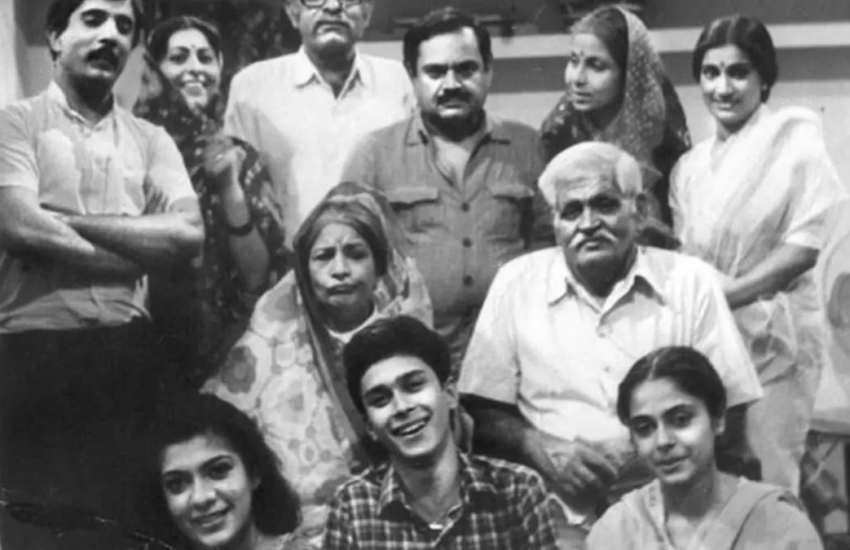Published : Aug 15, 2022 06:00 IST
COMMents  Follow Us
Follow Us
SHARE
READ LATER
The cast of ‘Hum Log’. | Photo Credit: THE HINDU PHOTO ARCHIVES
The first Indian soap opera, Hum Log, was aired on July 7, 1984, on Doordarshan, the only television channel of the time, forever changing the way Indians would consume mass media. From 70 mm cinema screens to the wooden cabinet enclosed television sets, the entry of television serials into people’s drawing rooms transformed the way information and entertainment would be disseminated.
Hum Log was the story of a middle-class family’s struggles and aspirations. Within a short span of time, Badki, Nanhe, Chutki, and Lajwanti became household names to whom people could easily relate. The serial dealt deftly with issues that were prevalent at the time. The makers of the serial handled delicately issues such as alcoholism, gender discrimination, poverty, superstition, and career prospects. Indians identified with the alcoholic Basesar and the aspiring cricketer Nanhe. Every house had a Lajwanti suppressed by a patriarchal system. At the end of each episode, popular film actor Ashok Kumar appeared on screen to artfully analyse the day’s topic. He enthralled audiences with his witticisms, insights, and sage advice.
Conceptualised by Vasant Sathe, the then Information and Broadcasting Minister, Hum Log was developed in collaboration with writer Manohar Shyam Joshi and director P. Kumar Vasudev. It was influenced by a Mexican drama.
Also read: 1987: Airing of ‘Ramayan’
The serial buoyed the golden era of Indian television with socially sensitive and mature content catering to an upwardly mobile, yet struggling middle-class mass audience. It was soon followed by Buniyaad in 1986 that dealt with Partition, Fauji, which is best known as the launching pad for Bollywood superstar Shahrukh Khan, comedy show Yeh Jo Hai Zindagi, Vikram Betal and Malgudi Days.
Although India had gained independence from the British rule in 1947, the process of nation-building was far from over. In a country divided by language, region, caste, class, and religion, among other things, a common identity and value system was difficult to achieve. Television serials, vastly contributed to this project of cultural assimilation. The entry of private channels in the 1990s, with regional and international channels being available at the click of a remote control button, provided further impetus to this process. Tara, aired in 1995, identified with the contemporary urban woman, and Hasratein tackled the subject of extramarital affairs.
Also read: India at 75: Epochal moments from the 1980s
As the economy was liberalised in the 1990s, television shows reflected the growing aspirations of the youth with reality and talent hunt shows such as Boogie Woogie, Sa Re Ga Ma Pa, and finally Kaun Banega Crorepati, hosted by none other than the Badshah of Indian cinema, Amitabh Bachchan. A prolific list of TV serials came during this time.
COMMents  Follow Us
Follow Us
SHARE
BACK TO TOP
Terms & conditions | Institutional Subscriber
Comments have to be in English, and in full sentences. They cannot be abusive or personal. Please abide to our community guidelines for posting your comment

